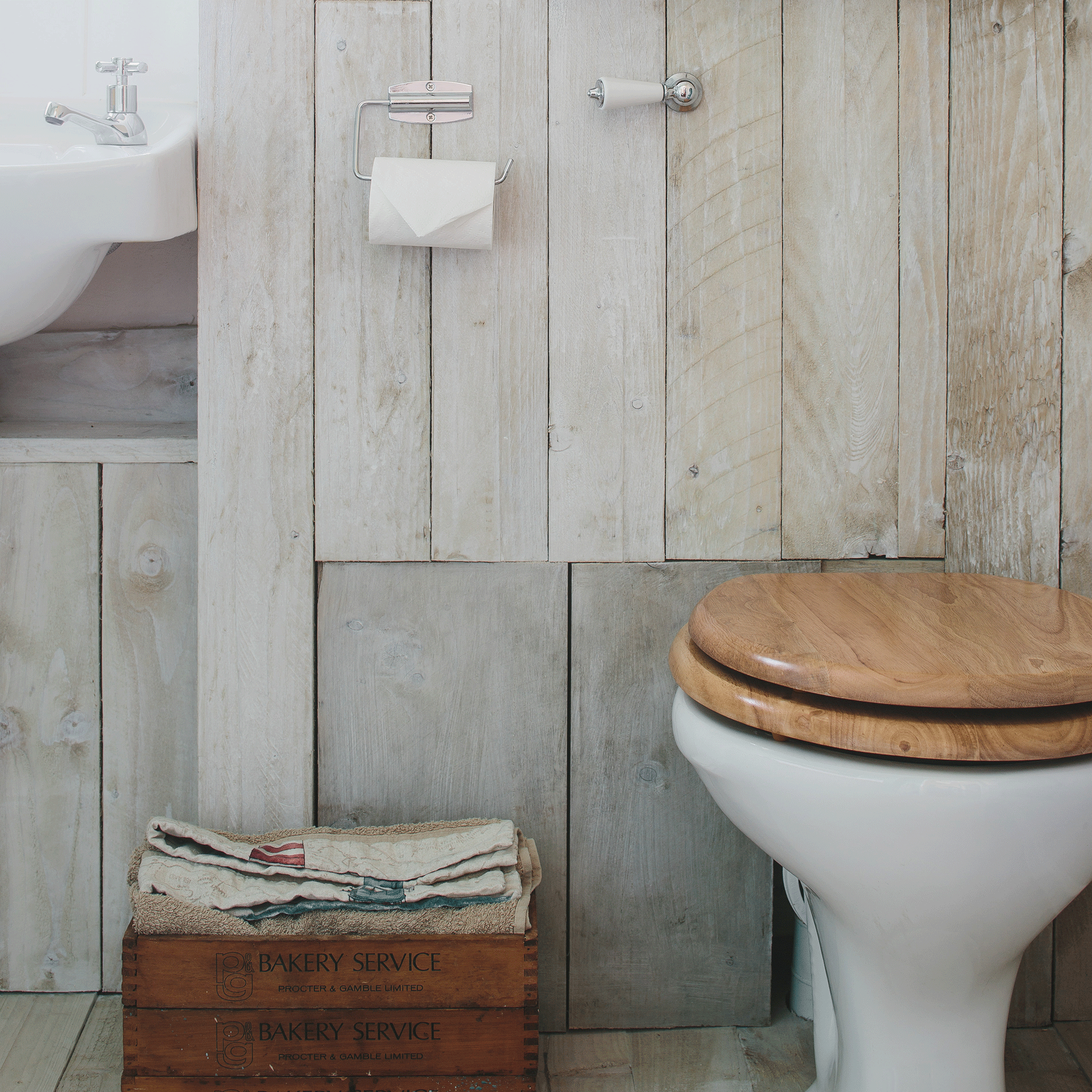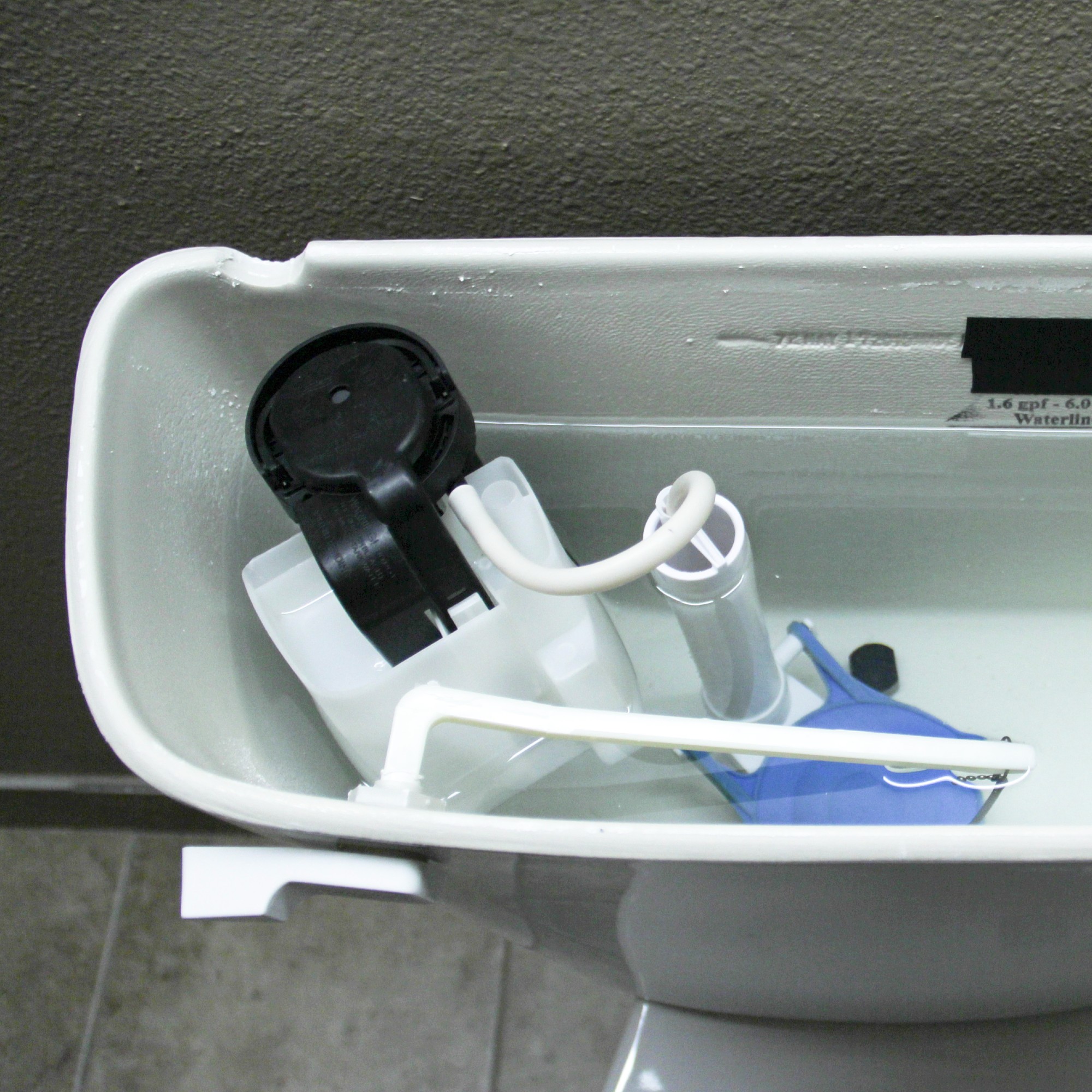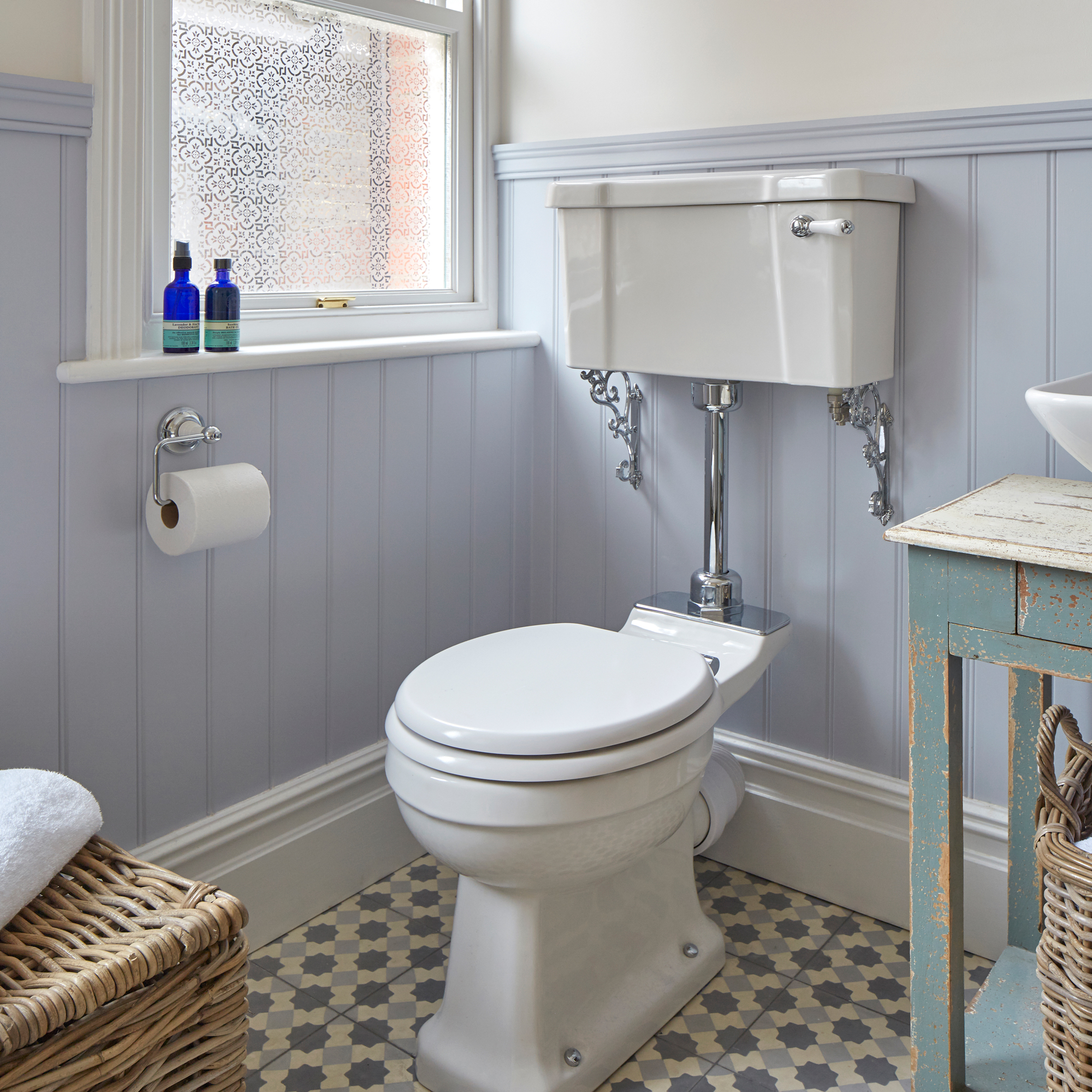How to fix a toilet handle – and keep your loo in working order
Everything you need to know about fixing a standard toilet handle so you can flush in peace


Everyone’s had that sinking feeling when the toilet handle won't work. Why does it always happen first thing in the morning when the whole family wants to go? Loo handles get a lot of use, and therefore they often misbehave. Luckily, knowing how to fix a toilet handle isn't too tricky.
There are a couple of different types of toilet handles - a traditional handle flush, push button and wall flush plate. A traditional handle flush is the easiest to fix yourself.
If you're flush doesn't seem to work and it isn't a case of needing to unblock the toilet, more often than not, the handle will simply be too stiff to flush due to limescale build-up. In this came if is time to crack open the best cleaning products - simply remove the handle and soak it in descaler. Or, it’s become too loose to engage the flush – so you just need to tighten the nut that holds the handle in place.

Paul Dwyer, managing director at Thomas Crapper says, ‘If the handle itself is broken, it can be fairly easily replaced.’
How to fix a toilet handle - Step-by-step
1. Get into the cistern
Carefully lift off the lid of the cistern. Drop it, and it could break, crack or chip. Put it somewhere safely out of the way. Also it is a good idea to put the toilet seat down, so you don’t drop any parts or tools into the bowl.
2. Check the inner workings
A torch might be handy here if your bathroom or cloakroom isn’t the brightest space to work in. You might also like to look at our genius bathroom lighting ideas.
This is what you should see inside: directly behind the handle is a metal rod that passes through a hole in the cistern. This is held in place by a plastic nut. On the end of the rod is the trip lever. This is a piece of solid plastic in an extended teardrop shape, with several holes going through it. Through the last hole should be a metal loop. The bottom of the loop should be hooked into the valve of the flushing system.
Sign up to our newsletter for style inspiration, real homes, project and garden advice and shopping know-how
When you press the handle down, the lever and loop (or ‘link’) lifts up the valve to let water in. It’s useful to know that you can pull this up yourself to flush the loo manually if the handle’s not working.

Inside a modern toilet
Andy Floyd, one of Homeserve's plumbing and heating experts says, ‘The handle can become too loose, which stops it connecting with the link and flushing mechanism. This can be fixed by simply tightening the nut at the back of the handle.’
3. Identify the problem
Here are three common reasons for the mechanism not working, and you'll need a few essential tools such as a screwdriver and wrench to fix them. First: the handle rod might have snapped off, leaving the trip lever dangling. In this case, you’ll need to completely replace the handle.
Second: the trip lever might have slipped off the end of the rod. This is easy to fix by pushing it back on and tightening the screw that holds it in place firmly.
Lastly, the metal link has bent open and is no longer connected to the trip lever or flushing system. If you have the strength and patience, this could be bent back using a pair of pliers in each hand, but failing that, you can buy a new one. Paul Dwyer at Thomas Crapper says, ‘You could replace it with a bit of wire or string, but obviously the weaker the material the quicker it will break again.’
4. Remove the broken handle
If you’re replacing your handle, disassemble the existing mechanism, but don’t throw it away. Trip levers vary in size, and so do the cistern holes that the handle rods go through. It’s best to take the parts to the DIY store to make sure you are replacing like for like.

To remove the handle, unscrew the nut (usually plastic) inside the cistern that holds the handle in place. Loosen the screw on the trip lever and slip it off the end of the rod. You can now pull the handle rod through the hole to remove the handle. To remove the trip lever and link, use pliers to bend open the link enough to unhook it from the flush mechanism.
5. Assemble the new mechanism
Simply put the new handle rod through the hole, screw on the backing nut and tighten with an adjustable wrench. Don’t be too enthusiastic, though – you might crack the cistern. Push the trip lever onto the end of the metal rod and tighten the screw, then hook the link onto the flush valve.
How much does it cost to replace a toilet handle?
It isn't that expensive to replace a toilet handle. It's probably one of the most affordable bathroom fixs you can do that will definitely make your life easier. An entire mechanism (handle, trip lever, link) will set you back between £6-10. If your handle is fine, you can buy the trip lever and link alone, for about £4.
How do you fix a broken toilet handle chain?
You can buy a new one, or remove a broken link with pliers before re-hanging it. ‘At the top of a high-level cistern there’s usually a lever with a hook or hole, in the end, to connect it to,’ says Paul Dwyer at Thomas Crapper.

Why does my toilet lever keep breaking?
‘You may not be giving the cistern a chance to refill before trying to flush again. It means there’s no resistance to your pull,’ says Paul Dwyer.
The age of the flush valve could also be an issue, if it is old and sticking it could be a sign that it needs replacing to a newer one that needs less force to flush. This should help protect the toilet lever from continuously breaking.

Vanessa Richmond has been a freelance writer, editor and editorial consultant since 2021. Her career in magazines began in 1998 and, apart from a four-year stint at women’s lifestyle magazine Red, it has been spent working on interiors titles including House Beautiful, Country Homes & Interiors and Style at Home. She is a former editor of Ideal Home, Country Homes & Interiors and Style at Home magazines. She has also worked for House Beautiful and Red. During her 25 years as a journalist, she has been a sub-editor, columnist, deputy editor and editor. Now she combines freelance writing with being a secondary-school English teacher.